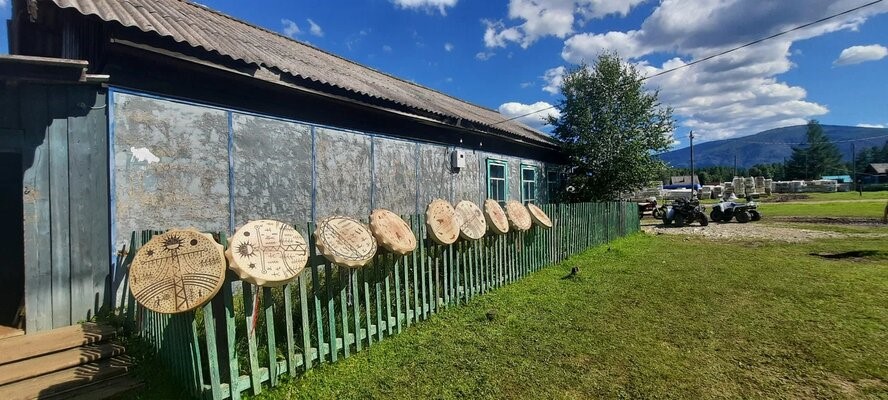|
|
Dr. Belyaeva-Sachuk
Senior Research Fellow, Arctic Research Center, Museum of Anthropology and Ethnography, Russian Academy of Sciences
|
The Tofalar. Modern Culture and Crafts, Folklore Groups, and Professional Art
In 1972, in Alygdzher, the Tofalar folk dance ensemble “Dyyrak Ibiler” (“The Swift-Footed Deer”) was created under the leadership of teacher-choreographer Ninel Perfilyeva. Born in Irkutsk, she choreographed and adapted the most famous traditional dance routines, including “The Eagle and the Partridge,” which is performed to the accompaniment of tambourines. For its contribution to the development of choreographic art, the ensemble was awarded the title “honored” in 1984. In 2017, the ensemble confirmed its title. “Dyyrak Ibiler” participated in many international and regional festivals and events: the international ethnocultural festival “Anginsky Round Dance” (Anga, the Kachugsky district), the regional festival-competition of choreographic art “Baikal Lace” (Usolye-Sibirskoye), the International Festival of Indigenous Minorities of the North of the Irkutsk region “Northern Argish” (Irkutsk), the Baikal International Festival-exhibition “Round Dance of Crafts on the land of Irkutsk” (Taltsy), and many others. The Tofalar treat the ensemble with great respect, and not just because it represents their culture. Many of them are still active members of the group. “Dyyrak Ibiler” performs on all local holidays. Since 1993, the leader of the ensemble has been Irina Varankina, a Tofalar from the Chogdu clan.
Ethnic holidays are an important element in modern cultural creativity. The summer games called “Argamchi-Yry” (“Lasso Games”) are of particular importance. The local residents also call them suglan (“meeting”). In the summer of 1991, they held the first such celebration in Alygdzher and later it became an annual tradition. Residents of all three Tofalar villages take part in the games, and almost all the Tofalar come to attend. In the clearing chums are set up, in which traditional household setup and cuisine are demonstrated. People wear ethnic costumes, hold singing competitions, create and display local amateur art, and tell each other fairy tales. After this, they organize sports games, including the one involving lifting stones and throwing them at a tree trunk, shooting at targets with rifles, belt wrestling, and reindeer racing. The winner of all competitions is awarded the title “the Mergen of Tofalariya” (the strongman of Tofalariya). In winter or spring, the holiday “Day of the Reindeer Herder-Hunter” (hun ibelershi-anshi) is celebrated, which was created in Soviet times and took place before hunters left for the autumn hunt. Nowadays, local residents hold competitions between hunters and reindeer herders on this day, and other residents can participate in cooking or fire-making competitions as well. There are exhibitions that showcase traditional costumes and handmade items. These holidays and events are especially popular among younger generations. They provide an opportunity for the Tofalar to get together, and therefore, contribute to the consolidation and revival of culture.
In 1993, in the village of Alygdzher, the Ethnocultural Center of Tofalariya emerged, its task being to preserve and update the Tofalar folk culture. The Center offers classes for children and adults, where one can learn how to make objects from birch bark, fur, leather, bone, and beads. The Center hosts various events and classes to help promote the Tofalar language. Here, local historian and researcher of Tofalariya Mikhail Pugachev (1931-2006) worked as a research assistant, discovering many archaeological sites, including shamanic burial places, and making a large collection of artifacts reflecting the Tofalar culture. The Center is also the main organizer of the Argamchi-Yry summer festival.
































































